Status of Invasive Species in B.C.
Invasive species are alien or exotic plants, animals and other organisms that have been introduced into a natural environment where they are not normally found and where they negatively impact the environment, people or the economy. For example, invasive species can threaten native species and damage habitats, reduce crop yields and forage for grazing, damage recreational and commmercial fisheries, damage infrastructure and pose health risks to people. This indicator reports on the status of invasive species in British Columbia.
- Almost a thousand alien plant and animal species are known to have established in natural environments in B.C. Plants are overwhelmingly the most common group of established alien species in the province.
- Not all alien species cause harm and are considered invasive, however the degree of potential impact is often not fully understood.
- Aquatic invasive species have been detected in almost all regions of the province. Invasive freshwater fish species in particular have expanded in both number and geographic area since the early 1900s.
- Of the over 800 alien plant species established in the province, over 175 are known to be invasive and occur at more than 117,000 locations across the province.
- Most invasive species are unintentionally introduced by human activities, consequently there are more known invasive species in areas of the province where there are more people.
Invaders! Invasive Species in B.C.
One of B.C.'s proactive approaches to managing invasive species is the BC Early Detection Rapid Response program which focusses on detecting and preventing establishment of new invasive species. There are a few well known stories from the past of intentional introductions of invasive species such as scotch broom, smallmouth bass, and yellow perch, but with public education and programs like BC Early Detection Rapid Response, these will hopefully be a thing of the past.
Number of Alien Species in B.C.
- As of 2014, 978 alien species are known to have established in B.C. Most of those are plants (86.8%) and 8.5% are invertebrates. The number of alien insects reported are limited to those from groups that are presently listed by the B.C. Conservation Data Centre (dragonflies, tiger beetles, butterflies and grasshoppers).
- Birds, reptiles, amphibians, fish and mammals make up 4.6% of the known established alien species, including the familiar eastern grey squirrel and American bullfrog. The remainder is one fungus species (0.1%).
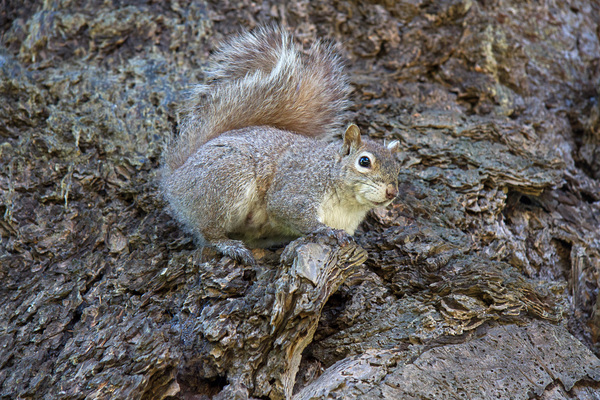
Eastern grey squirrel (Sciurus carolinensis) Photo credit: Dominique Sigg
Number and Distribution of Aquatic Invasive Species in B.C.
- Aquatic invasive species have been detected in almost all ecological drainage units in the province. Aquatic invasive plants are the most widespread and numerous group, with 101 species occurring in 27 of 36 ecological drainage units.
- There are only two aquatic invasive reptile species in the province, and both are turtles: the red-eared (pond) slider, a popular pet turtle that is often released into the wild; and the eastern snapping turtle.
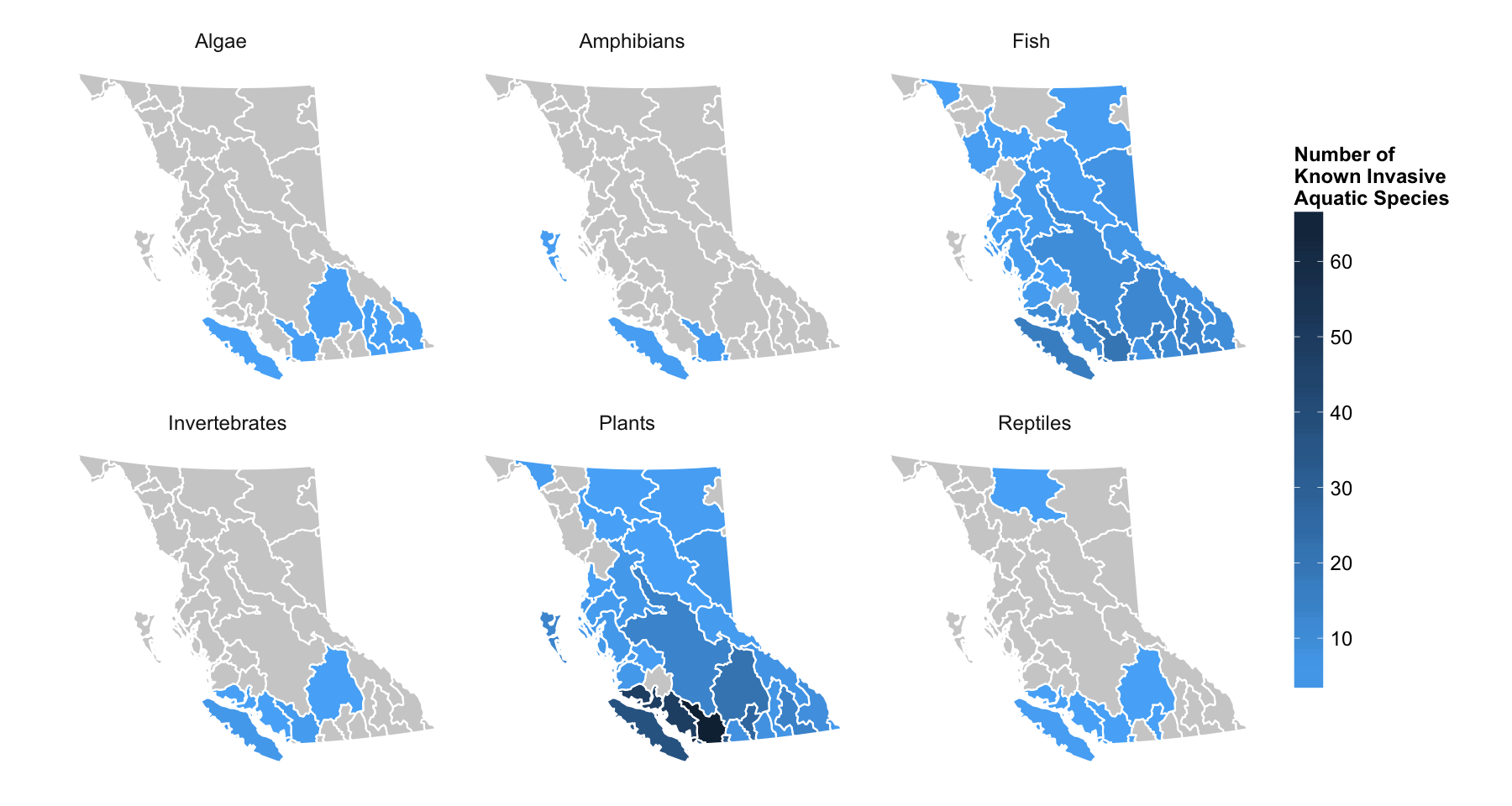
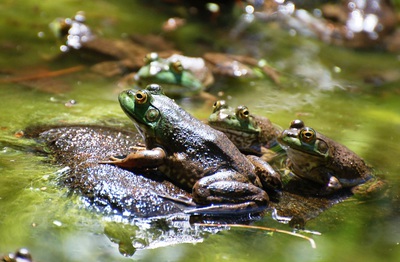
American bullfrog (Lithobates catesbeianus) Photo credit: Leah Ramsay
- Invasive freshwater fish species have expanded in number and geographic range since the early 1900s. They have been found in 25 of 36 ecological drainage units, with 30 different invasive freshwater fish species detected in the province.
- As with many long-term observational data, some of the observed increases in invasive freshwater fish may be due to increased survey effort over time.
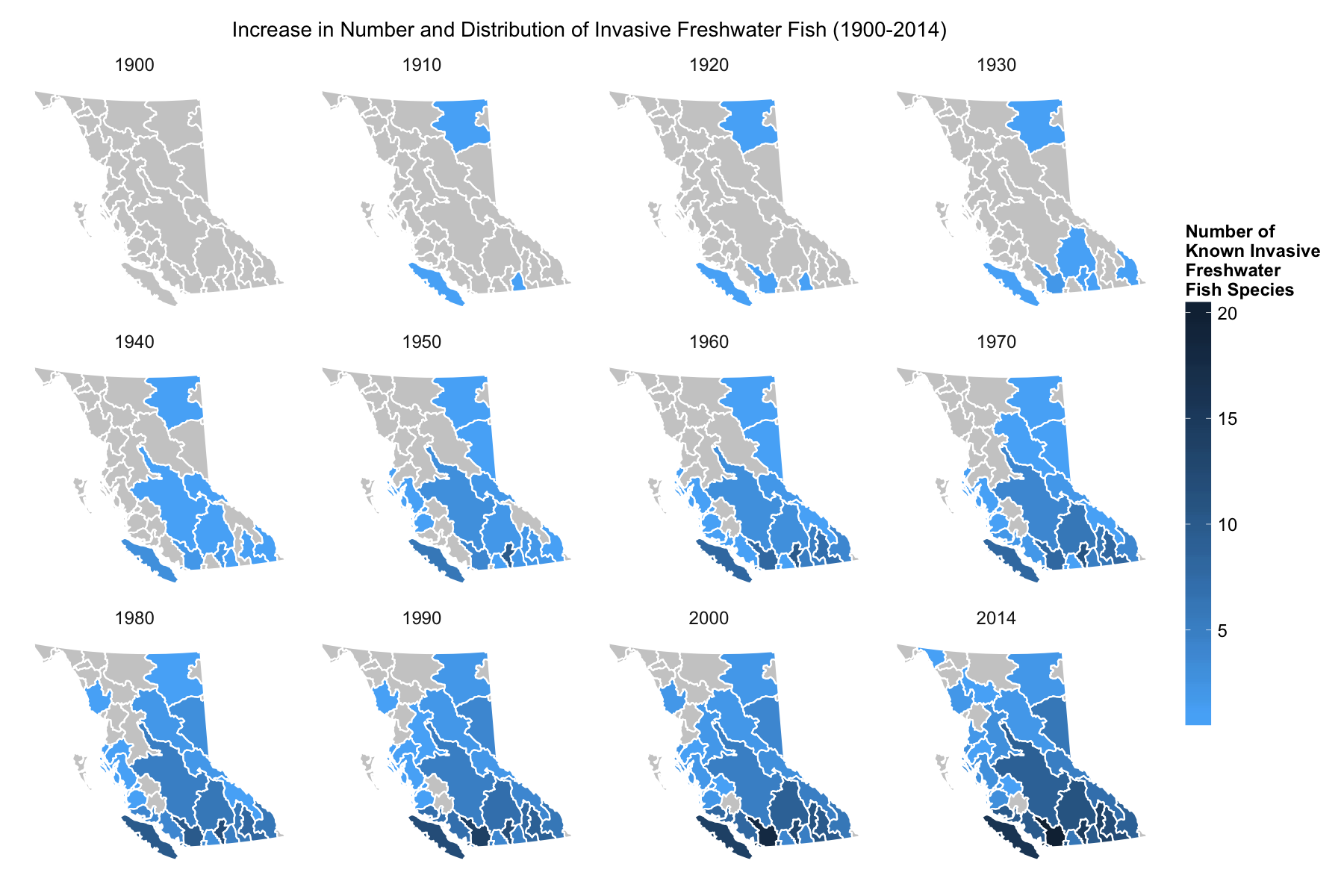
Number and Distribution of Invasive Plant Species in B.C.
- As of 2014, there are over 117,000 locations with recorded invasive plant species in B.C.
- Habitats—or biogeoclimatic zones—with the most invasive plant sites are the Interior Douglas-fir, Coastal Western Hemlock, Interior Cedar - Hemlock, and the Sub-Boreal Spruce zones, all of which have more than 10,000 known invasive plant locations. High elevation areas have the fewest invasive plant location records (12 or less each).
- There are a total of 175 recorded invasive plants species in B.C. The most common invasive plant species are spotted knapweed, Canada thistle, common tansy and oxeye daisy, with more than 10,000 known locations for each. However, many of the 175 species are much less abundant—for example 36 species are known to occur at 10 or fewer locations in the province at this time.
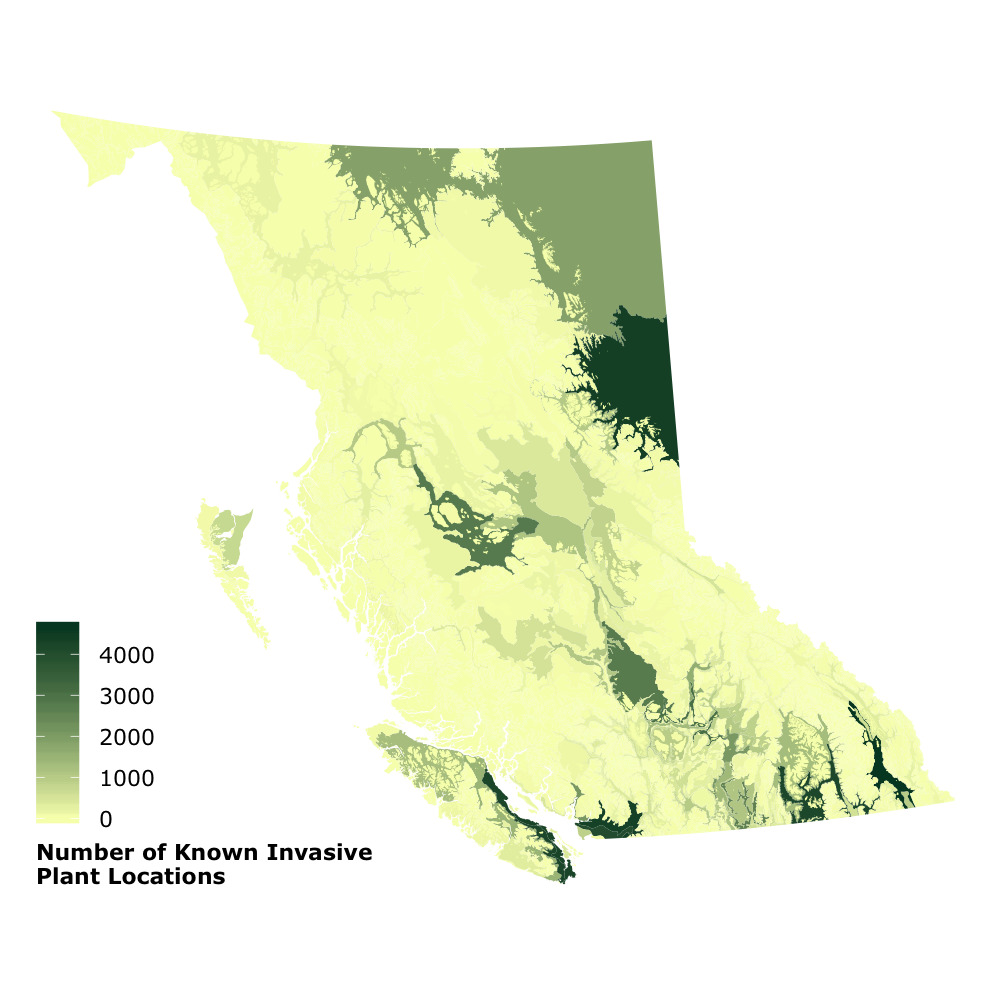
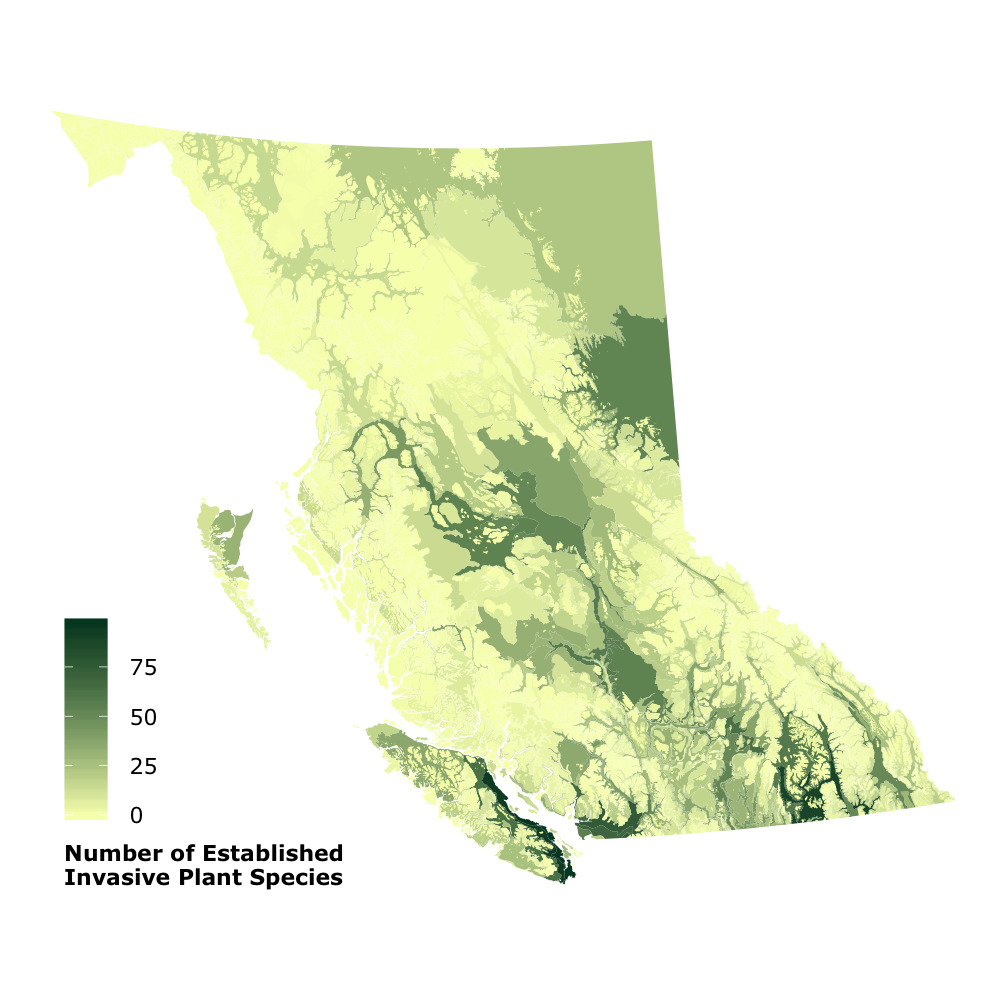
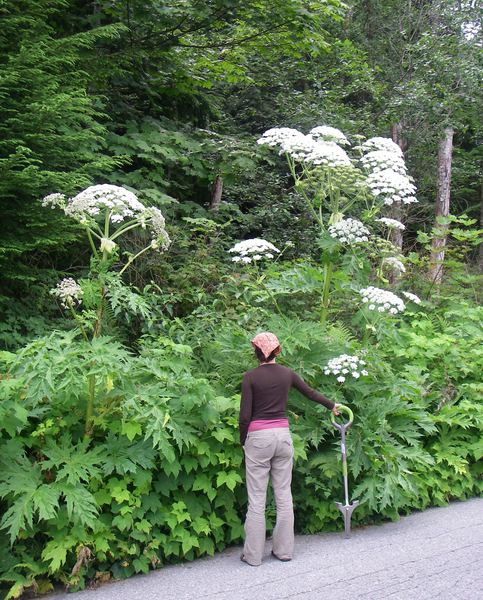
Giant hogweed (Heracleum mantegazzianum)
About the Data Sources
The data summarized for this indicator—available in the Data section below—are from three different B.C. government programs:
- Number of Alien Species data are from the B.C. Conservation Data Centre (CDC). The total number of alien species for each species group is the sum of all known and established exotic subtaxa originating from outside of B.C. as of 2014. Subtaxa include species, subspecies, populations and varieties. The number of alien species reported by the CDC only includes information from the better known groups of plants and animals and is therefore a minimum estimate. This is particularly true for insects, as only species groups for which the CDC has comprehensive lists (dragonflies, tiger beetles, butterflies and grasshoppers) are tracked and reported. As invertebrate groups are added to the CDC lists, these will be incorporated in future updates to this indicator.
- Number and Distribution of Aquatic Invasive Species data are from the Aquatic Invasive Species Program. The data are a subset of the CDC exotic species list as it only includes aquatic and semi-aquatic taxonomic groups and alien or exotic aquatic species that are considered invasive. However, this dataset also includes all aquatic invasive species records—established species, species with single or only a few occurance records, and species that are native to one part of B.C. but invasive in another part of the province.
- Number and Distribution of Invasive Plant Species data are from the Invasive Alien Plant Program Application administered by the B.C. Invasive Plant Program. The data are a subset of the CDC exotic plant species list as it only includes alien plants that are considered invasive and that have occurrence records in B.C. Information on management activities for many invasive plants are also contained in this database.
The R code for repeating the analyses presented on this page is available on GitHub.
References and Other Useful Links
- Least Wanted! Early Detection-Rapid Response Program for B.C.
- Click HERE to report an invasive species in B.C.
- For more information on invasive species you can visit the B.C. government Inter-Ministry Invasive Species Working Group and the B.C. Invasive Plant Program
- Invasive Species Council of British Columbia (ISCBC)
Data
*By accessing these datasets, you agree to the licence associated with each file, as indicated in parentheses below.
Download a printable version of this indicator (PDF, 5.3MB)
Updated September 2015
Suggested Citation: Environmental Reporting BC. 2015. Status of Invasive Species in B.C. State of Environment Reporting, Ministry of Environment, British Columbia, Canada.


